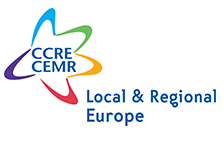A quick overview
“A twinning is the coming together of two communities seeking, in this way, to take action with a European perspective and with the aim of facing their problems and developing between themselves closer and closer ties of friendship”.
This was the definition of twinning given many years ago by Jean Bareth, one of the founders of the Council of European Municipalities and Regions (CEMR) after the 2nd world war. In this way, he identified the primary values which twinning represents: friendship, co-operation and mutual awareness between the peoples of Europe.
For twinning is the expression of a European unity and identity built from the grass roots. It is perhaps the most visible form of European co-operation, with thousands of towns and villages proudly declaring, as you enter their territory, which partner communities they are twinned with.
Twinning is also a wonderfully flexible instrument. It can take place between small villages, towns, counties, big cities…. It can focus on a whole range of issues, and can involve a wide range of actors from two or more twinned communities.
A good twinning partnership can bring many benefits to a community and the municipality. By bringing people together from different parts of Europe, it gives an opportunity to share problems, exchange views and understand different viewpoints on any issue where there is a shared interest or concern.
It can enable young people to get involved with their counterparts from a different country, and to gain self-confidence. It can help everyone to better understand what Europe is and means in today’s world – and where the future may lead us.
There are many examples of good practice in twinning, covering a wide range of issues - art and culture, young people, citizenship, sustainable development, local public services, local economic development, social inclusion, solidarity…
It represents a long-term commitment between the partners, not a short-term project partnership. It should always be able to survive changes in political leadership and short-term difficulties of one or other partner, and support each other in times of need, e.g. a major flood. And being a commitment for the long term, it is vital to ensure that the partnership is regularly reviewed, to make sure it meets the needs of the present day, and remains fresh and dynamic.
Equally important is the dual commitment required for twinnings to be successful: that of the local authorities, but also that of the citizens. In a few words: there can be no twinning without the active participation of the citizens! This dual nature often requires the setting up of a twinning committee bringing together local officials and citizens.


